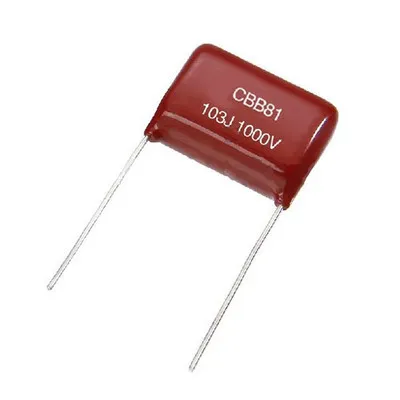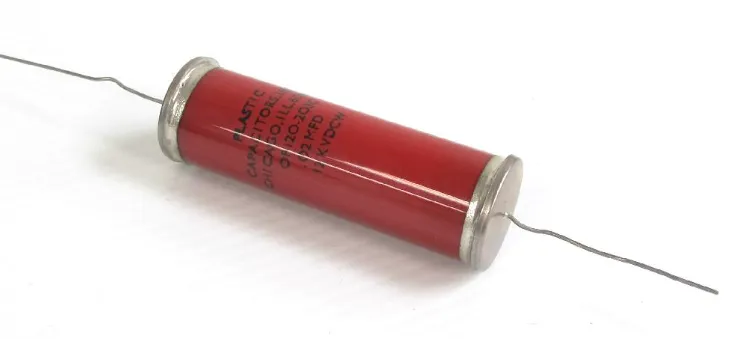Unveiling Polypropylene Capacitors: Principles, Applications, and Future Trends
The purpose of this article is to introduce polypropylene capacitors and provide an in-depth look at their characteristics, application areas, and comparisons with other capacitor types. By elucidating the benefits and future trends of polypropylene capacitors, we will help you better understand the importance of this critical electronic component and envision its role in an evolving technological world. Let’s explore together what polypropylene capacitors are and the innovation and impact they have brought to modern electronics.

polypropylene capacitors
Definition and function of polypropylene capacitors
Polypropylene capacitor is an electronic component whose main function is to store electrical energy and release it when needed. The following is a brief description of the definition and role of polypropylene capacitors:
Definition of polypropylene capacitor:
Polypropylene capacitor is an electronic component, usually made of polypropylene film as the dielectric, with two conductive electrodes separated and wound together. This construction allows them to store electrical energy in a circuit and release it in an efficient manner when needed.
Function:
Store electrical energy:
The main purpose of polypropylene capacitors is to store electrical charge, which means they can store electrical energy in a circuit, similar to the function of a battery. When charges are delivered to a capacitor, they are stored in the dielectric and released when needed by the circuit.
Smooth voltage:
Polypropylene capacitors can be used to smooth voltage fluctuations in a circuit. They can absorb instantaneous voltage spikes in the circuit to ensure voltage stability in the circuit.
Adjusting circuit response:
Polypropylene capacitors can be used to adjust the frequency response of a circuit. By adding or changing these capacitors at specific locations, the frequency characteristics of the circuit can be affected to suit the needs of different applications.
Filtering:
Polypropylene capacitors can also be used as signal filters to remove noise or unwanted frequency components from circuits.
Coupling:
They can also be used to pass signals from one part to another, achieving coupling and transmission of signals.
Structure of polypropylene capacitor
The structure of polypropylene capacitors is relatively simple and effective, and mainly includes the following key components:
Dielectric: The core of polypropylene capacitors is the dielectric, and polypropylene film is usually used as the dielectric material. The dielectric is the insulating material of a capacitor that exists between the two conductive electrodes to isolate and store charge. Polypropylene material has good insulating properties and stable dielectric properties, making it suitable for high-frequency and high-voltage applications.
Conductive electrodes: In the structure of a capacitor, there are two conductive electrodes, usually made of metal foil or metal film. These conductive electrodes are located on both sides of the dielectric film and act as electrodes of the capacitor, forming a capacitive unit together with the dielectric. The charge is stored in the space between the dielectric and the conducting electrode.
Connecting Wires/Leads: Capacitors often have leads or connecting wires that connect the capacitor to other components in the circuit. These leads are usually attached to the conductive electrodes to allow the capacitor to be integrated into the circuit.
Casing/Packaging: To protect the capacitor's internal components and ensure its stability, polypropylene capacitors are typically packaged in an enclosure. The housing can be made of different materials, such as plastic or metal, to protect the capacitor from mechanical damage and environmental influences.
Markings/Markings: Capacitors often have markings or markings that indicate important information such as their capacitance value, voltage rating, polarity, etc. These identifications assist in the proper selection and connection of capacitors and ensure their proper operation in the circuit.
Working principle of polypropylene capacitors
Polypropylene capacitors work on the basis of storing electrical energy in an electric field. It consists of a polypropylene film dielectric between two conductive electrodes. When a voltage is applied to a capacitor, positive charges collect on one conducting electrode and negative charges collect on the other conducting electrode, simultaneously establishing an electric field in the dielectric. This electric field stores electrical charge, which is stored in the form of electric field energy when charged, and flows back into the circuit when released, completing the work. The capacitance of capacitors is proportional to voltage, so they can store and release charge and are used for voltage smoothing, filtering, phase shifting, and other electronic circuit applications.
Advantage of the Polypropylene Capacitors:
High dielectric constant: Polypropylene capacitors have a relatively high dielectric constant, which allows them to store more charge and have a greater capacitance relative to other capacitors of the same volume.
Low dissipation factor: Polypropylene capacitors generally have a low dissipation factor, which means they remain efficient and produce little energy loss during the storage and release of electrical energy.
High Temperature Operating Capability: This type of capacitor is capable of operating over a wide temperature range, including high temperature environments, making them suitable for some demanding applications such as automotive electronics and aerospace.
Stability: Polypropylene capacitors exhibit high stability, can maintain a constant capacitance value, and are not easily affected by external environments or voltage fluctuations, contributing to the reliability of electronic circuits.
Low Leakage Current: Polypropylene capacitors have low leakage current, which means they leak less charge as they store it, thus improving the performance of the capacitor.
Long life: Relative to some other capacitor types, polypropylene capacitors generally have a longer life and are able to operate stably in circuits for a long time.
Disadvantages of the Polypropylene Capacitors:
Larger size: Polypropylene capacitors can be larger than some other types of capacitors, such as ceramic capacitors and plastic capacitors.
Relatively High Cost: Relative to some traditional capacitor types, the cost of polypropylene capacitors can be higher, especially high-performance models.
Overall, polypropylene capacitors are widely used in electronics due to their high performance, stability, and reliability. However, selecting the appropriate capacitor type should be determined by the needs and performance requirements of the specific application.
Different Types of Polypropylene Capacitors
Polypropylene capacitors can be divided into different types, the two main types of which are metalized polypropylene capacitors (MPP) and film polypropylene capacitors (PPF). Here is a brief description of them:
Metallized Polypropylene Capacitors (MPP):
Construction: Metallized polypropylene capacitors use metallic aluminum or zinc foil as electrodes, which are deposited onto a polypropylene film and then rolled together to form the capacitor.
Features: MPP capacitors have high capacitance value, low loss factor and high frequency characteristics, making them suitable for high performance circuits and high frequency applications. They usually have higher voltage ratings.
Thin Film Polypropylene Capacitors (PPF):
Structure: Thin film polypropylene capacitors also use polypropylene film as the dielectric, but their conductive layers are usually prepared by metal spraying or vacuum evaporation, which are relatively thin and light.
Features: PPF capacitors are smaller in terms of capacitance value, but they have very low loss factors and are suitable for applications with precise performance requirements, such as audio equipment and signal filters. They are typically used in low voltage applications.
These two types of polypropylene capacitors have slightly different properties and applications, and the choice depends on the needs of the circuit. Overall, polypropylene capacitors are widely used in electronics due to their high performance, stability, and reliability.
Application fields of polypropylene capacitors
A. Electronic circuits
Polypropylene capacitors are widely used in electronic circuits for power supply filtering to ensure voltage stability, signal processing and filtering in audio equipment, motor starting, oscillator circuit stability, frequency adjustment in communication equipment, battery management, power factor Calibration and power electronic equipment in high temperature environments. Its high performance, stability and reliability make it a key component in various electronic applications, helping to achieve stable operation and high-quality performance of circuits.
B. Power electronic equipment
Polypropylene capacitors play a key role in power electronic equipment and are mainly used in power factor correction, motor control, battery management and power electronic applications in high temperature environments. Their high-temperature operating capabilities, low dissipation factors, and high capacitance values make them indispensable components for improving power quality, stabilizing circuit operation, and enhancing the performance of electronic devices.
C. Automotive electronics
Polypropylene capacitors are widely used in the field of automotive electronics, mainly for power supply filtering to reduce engine vibration and power supply noise, battery management systems for charge and discharge management, motor control systems to help start the rotation of motors, and vehicle interior sound systems. and entertainment equipment to ensure audio quality and signal filtering. Its high performance and reliability make it suitable for a variety of applications in automotive electronics, helping to improve vehicle performance and user experience.
Comparison of Polypropylene Capacitors with Other Capacitors
A. Comparison of polypropylene capacitors and aluminum electrolytic capacitors

aluminum electrolytic capacitors
Polypropylene capacitors are suitable for applications requiring high capacitance, low losses and high temperature operating capabilities, such as power filtering, audio equipment and electronic equipment in high temperature environments. Aluminum electrolytic capacitors are suitable for applications with small and medium capacitance, general performance and economic requirements. The choice of capacitor type should be determined based on the needs of the specific application.
B.Comparison of polypropylene capacitors and ceramic capacitors
Polypropylene capacitors are suitable for applications requiring high capacitance, low losses and high temperature operating capabilities, while ceramic capacitors are suitable for applications requiring small capacitance, general performance and economical requirements
C.Comparison of polypropylene capacitors and plastic capacitors

plastic capacitors
Compared with plastic capacitors, polypropylene capacitors generally have higher capacitance values, lower loss factors and better temperature stability, making them suitable for high-performance and high-temperature environment applications such as power filtering and audio equipment. The latter usually have smaller capacitance values and are suitable for general performance and cost-sensitive applications such as decoupling circuits
Future development trends of polypropylene capacitors
In the future, polypropylene capacitors are expected to offer higher performance and broader applications. They will evolve to meet the demands of emerging technologies by providing higher capacitance values, lower dissipation factors, and high-temperature operation, especially as electronic devices become smaller and smarter. Additionally, the increasing demand for high-performance capacitors in renewable energy, electric vehicles, and green energy systems will improve electrical energy storage and distribution efficiency. Polypropylene capacitors are poised to play a crucial role in the electronics and energy industries, fostering sustainability and energy efficiency.
Summary Polypropylene Capacitors
Polypropylene capacitors are electronic components widely used in electronic circuits and stand out for their high performance, stability and reliability. Its importance is reflected in many fields, including power supply filtering, audio equipment, motor control, applications in high temperature environments and power electronic equipment. Its key advantages include high capacitance values, low dissipation factors and high-temperature operating capabilities, which help improve circuit performance, energy efficiency and the development of electronic technology.
Related Articles
Why Do Capacitors Explode?
What is the Standard Lead Spacing for Capacitors?
What Is CBB61 Capacitor - Function and Applications
What Causes Capacitors to Fail
Tantalum vs Ceramic Capacitor: What's the Differences?
Run Capacitor vs Start Capacitor
Radial vs Axial Capacitor: Whats the Differences?
Polarized vs Non-Polarized Capacitor
How to Test a Hard Start Capacitor [Complete Guide]
How to Install a Capacitor to Two Amps










